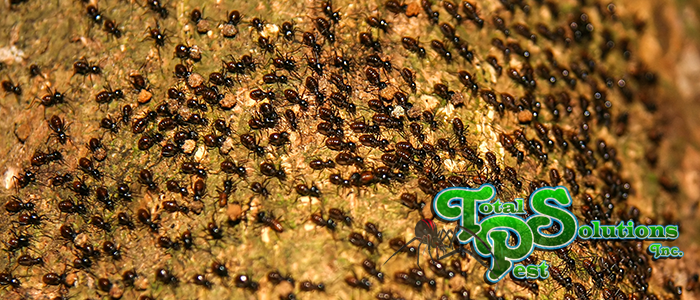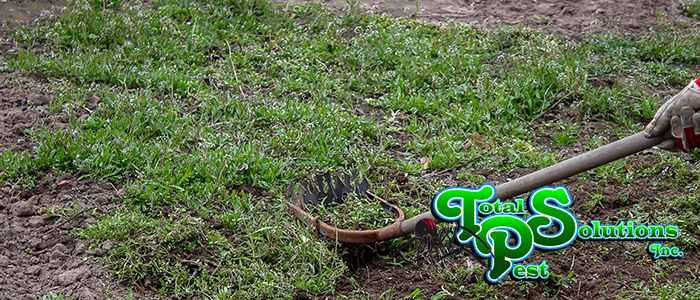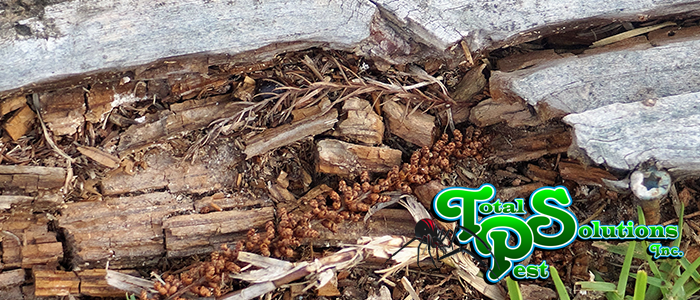
How Do Ant Colonies Work?
Everyone knows how to recognize an ant. They’re little sausage-shaped bugs with big curious-looking heads and scuttling little legs that take them sniffing and marching around everywhere in search of food or fights. But as familiar as ants are, how much do you know about their day-to-day lives? Ants live in a social arrangement in a large structure called a colony. So even if you dislike ants for being as pesky as they are, they lead fascinating little lives that can be fun to learn about. Learning about them can also help you manage them, so let’s take a look at what makes them tick.
The Structure of Ant Colonies
Ants have a very well-organized social structure, which might be surprising if you watch their apparently chaotic movements above ground. Ants are divided into different castes. That is to say; each individual ant has a very specific job in the colony. The typical caste division is queen, males, and workers. Worker ants, depending on species, are divided further into specialized roles, such as soldiers or honeypots. All worker ants are females, which means that most of the ants you see above ground will be females – Even the soldiers.
Ant colonies can be very large, with thousands of individuals. Some species can even form what are called supercolonies, with multiple queens and connected nests spanning miles – Like the Argentine supercolony, a single nest that is over 3000 miles across! Most colonies will never get that big, thank goodness. Instead, they tend to be built of densely tangled upper tunnels just below the surface, with long winding paths leading underground with wide circular chambers for ants to occupy.
Some chambers are for raising young ants, some are for sleeping – And some species of leaf-cutting ants even take to farming, bringing leaves into their nest to grow fungus that they then eat. Some ants prefer ranching to growing crops, tending to aphids, and drinking the sap they produce! Workers leave behind pheromone trails to guide other hands to food sources or new nesting sites. If you can believe it, some species can even talk – Rubbing parts of their bodies together to make sounds that other ants can hear and understand.
The Queen
While worker ants are responsible for gathering food and defending the nest – Among other tasks such as cleaning eggs and feeding the larvae – The queen is perhaps the most essential part of the colony. She lays eggs constantly, which become the new workers and new queens of new colonies. After mating, the queen stores sperm in an organ in her abdomen. As she lays eggs, she uses this organ to fertilize some eggs. These eggs produce female larvae, which may become queens. Unfertilized eggs become males. Queens of some species can live and lay eggs for up to 15 years!
Winged Ants
All queens start their adult lives with wings. Males are also born with wings. Their whole lives, they never do any work, only eating and resting until it’s time for their only mating flight. Then, when the time is right, every winged ant emerges and takes to the sky to mate and find new places to start colonies. The queen digs the first tunnel of the nest, loses her wings, and begins to lay eggs.
This Can Be a Big Problem
Because ants are such efficient creatures, a single colony can turn into hundreds in a single season. As interesting as they are, we can bet you don’t want to spend all day having them crawl over your kitchen and carpets – Or even your lawn. So if you have an ant problem in Polk County – Call us today! No matter how sophisticated they are, we’ll get rid of them.
continue reading
Related Posts
Holiday Pest-Free Homes in Winter Haven: Avoiding Cargo Pests As
Auburndale’s Mole Cricket Damage: Repairing Turf Before Frost As the
Lakeland’s Fall Termite Swarms: Early Detection Tips As the summer






